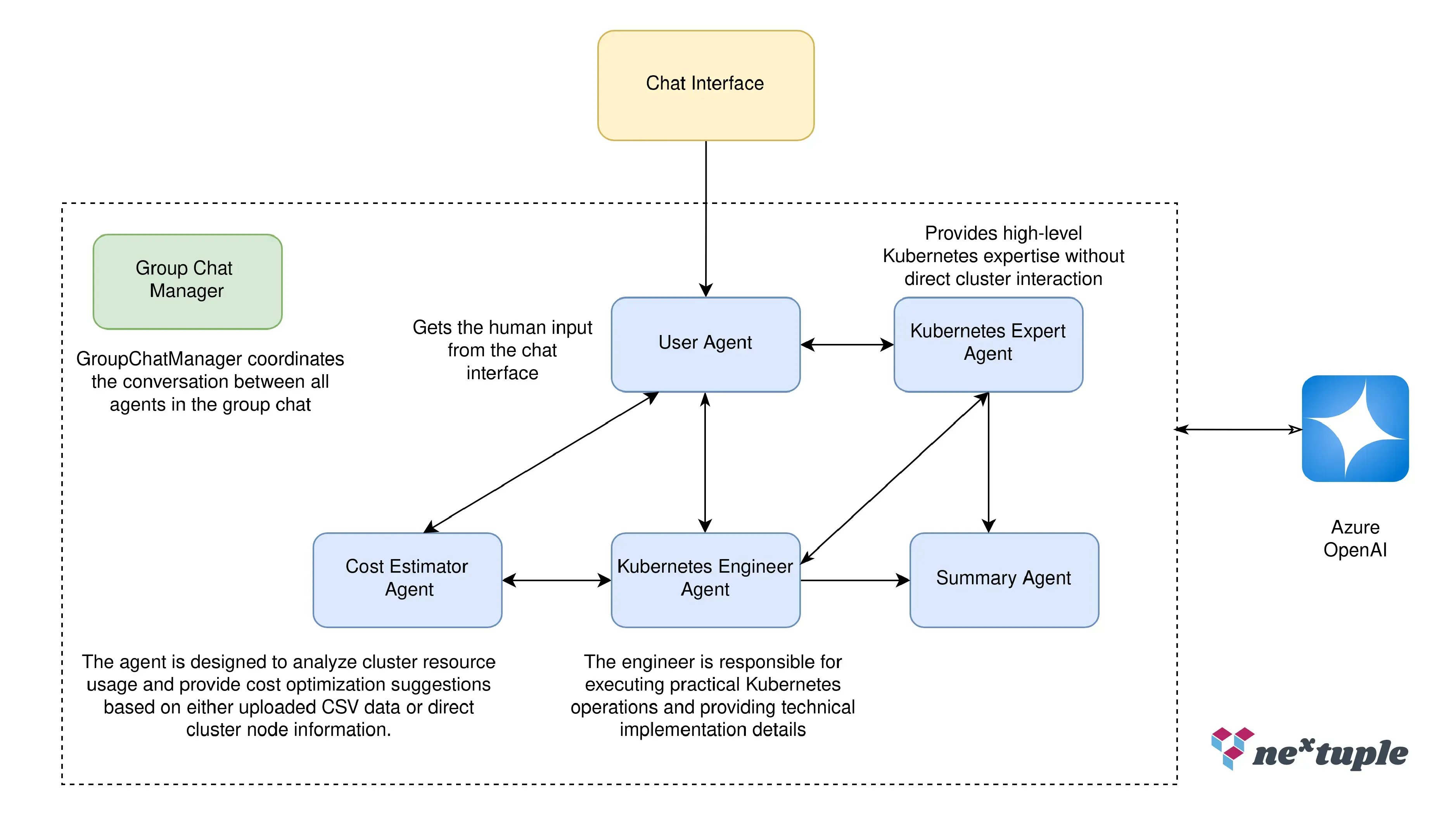The evolution of DevOps has always been about streamlining processes, enhancing collaboration, and delivering value faster. Today, we stand at the cusp of a transformative shift with the integration of Agentic AI—intelligent, autonomous systems capable of executing complex tasks with minimal human intervention. Recently, my team launched a beta version of a Kubernetes Chatbot, a multi-agent AI application built using Microsoft’s AutoGen framework and powered by Azure OpenAI. This tool connects directly to our non-production Kubernetes cluster, leveraging advanced AI capabilities to streamline DevOps workflows and exemplify how Agentic AI can redefine operational efficiency.
What is Agentic AI, and Why DevOps?
Agentic AI refers to systems that don’t just respond to commands but proactively reason, collaborate, and execute tasks across multiple domains. In the context of DevOps, where speed, precision, and scalability are paramount, such AI agents can act as force multipliers. They handle repetitive tasks, troubleshoot issues, and even provide actionable insights—all while adapting to the dynamic nature of containerized environments like Kubernetes.
Our Kubernetes Chatbot is a practical manifestation of this concept. Designed as a multi-agent system, it leverages Microsoft’s AutoGen framework and Azure OpenAI to enable seamless interaction between specialized AI agents, each tasked with specific responsibilities. The result? A conversational interface that empowers teams to manage Kubernetes clusters more intuitively and efficiently, combining the power of advanced language models with intelligent task automation.

Real-World Capabilities of Agentic AI in Kubernetes
Based on user prompts, our Chatbot demonstrates a range of capabilities that showcase the power of Agentic AI in DevOps:
- List Namespaces: Quickly retrieve an overview of all namespaces in the cluster.
- Restart Pods: Automate pod restarts without diving into command-line minutiae.
- Explain Pod Logs: Parse and summarize logs to accelerate troubleshooting.
- Debug Failed Pods or Restarts: Diagnose issues with failed pods and suggest remediation steps.
- Scale Deployments: Adjust deployment sizes dynamically based on workload demands.
- Patch Deployments: Update environment variables or resource configurations with ease.
- Answer Contextual Questions: Respond to queries like, “Which version of PostgreSQL or Elasticsearch is currently in use?”
- Estimate Deployment Costs: Provide cost projections for deploying a set of applications.
- Disk Utilization Insights: Deliver metrics and recommendations to optimize resource usage.
- Service Discovery Assistance: Identify available services, endpoints, and their connectivity within the cluster.
- Pod Scheduling Insights: Diagnose pod scheduling failures and suggest node affinity, taints, or toleration adjustments.
- Event Analysis: Summarize critical Kubernetes events and surface anomalies affecting cluster performance.
And this is just the beginning. The multi-agent architecture allows us to expand the Chatbot’s capabilities over time, tailoring it to our team’s evolving needs.
How Agentic AI Elevates DevOps
The true value of Agentic AI lies in its ability to bridge the gap between human intent and technical execution. For instance, debugging a failed pod traditionally requires sifting through logs, checking configurations, and running multiple kubectl commands—a process that could take minutes or hours depending on complexity. With our Chatbot, a simple prompt like “Why did this pod fail?” triggers an agent to analyze logs, correlate events, and deliver a concise explanation—all in seconds.
This isn’t about replacing DevOps engineers; it’s about augmenting them. Agentic AI handles the heavy lifting, freeing teams to focus on higher-order tasks like architecture design, strategic planning, and innovation. It also democratizes access to Kubernetes management, enabling less experienced team members to perform advanced operations with confidence.
Lessons from the Beta Launch
Rolling out this Chatbot in beta has taught us a few key lessons about integrating Agentic AI into DevOps:
- Start Small, Iterate Fast: We began with a restricted scope to ensure stability, gradually unlocking more features based on feedback.
- Security is Non-Negotiable: Access controls ensure the agent operates within safe boundaries.
- Feedback Drives Improvement: Engaging the team early has been critical to refining the tool’s usability and functionality.
The Future of DevOps with Agentic AI
The Kubernetes Chatbot is more than a tool—it’s a glimpse into the future of DevOps. Imagine a world where AI agents autonomously monitor clusters, predict failures before they happen, and fine-tune resources in real time. This isn’t science fiction; it’s the logical step forward as Agentic AI matures. For DevOps leaders, the opportunity is clear: invest in these technologies now to stay ahead of the curve.
Start small with multi-agent frameworks like AutoGen and target a specific pain point—debugging, cost estimation, or scaling. The results might surprise you.
Ready to harness Agentic AI in your DevOps workflow?
Connect with us to explore how Nextuple can help you design, implement, and optimize AI-driven workflows. Let’s turn your DevOps strategy into a competitive advantage.
Stay tuned for more updates as we push the boundaries of what’s possible with Agentic AI in DevOps.
.png?width=113&name=nextuple_logo_vector%20(4).png)